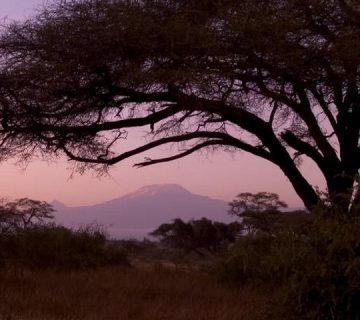Essential Safety Gear For Kilimanjaro Trekking
Embarking on a trek up Mount Kilimanjaro is not just a journey through some of Tanzania’s most awe-inspiring landscapes; it’s a venture into the realms of personal achievement and adventure. As the highest peak in Africa, Kilimanjaro calls to adventurers from around the globe, offering them a chance to witness the world from above the clouds. However, conquering this majestic mountain requires more than sheer willpower; it necessitates proper preparation, especially in terms of safety gear. At Kilimanjaro Centre For Trekking and Ecotourism (KCTE), we understand the importance of being well-equipped, and we’re here to guide you through selecting the essential safety gear for your Kilimanjaro adventure.
Why the Right Gear Matters on Kilimanjaro
Trekking Kilimanjaro is an exhilarating challenge that tests your physical and mental limits. The mountain’s diverse ecosystems—ranging from lush rainforests to alpine deserts—and its high altitude, which can reach up to 5,895 meters (19,341 feet), mean that trekkers must be prepared for all weather conditions and terrains. Having the right gear isn’t just about comfort; it’s critical for your safety. This makes selecting the appropriate equipment not just a recommendation, but a necessity.
Essential Gear for Your Kilimanjaro Trek
Clothing: Layer Up for Ultimate Protection
The key to staying comfortable on Kilimanjaro is layering. Your clothing should be versatile enough to handle changes in temperature and weather conditions.
- Base Layer: Opt for moisture-wicking materials like merino wool or synthetic fibers that keep you dry and warm.
- Insulation Layer: A fleece or down jacket will help retain body heat in colder zones.
- Outer Layer: A waterproof and windproof jacket with breathable fabric is indispensable for shielding you against rain, wind, and cold.
Footwear: Your Foundation for Every Step
The importance of reliable, sturdy footwear cannot be overstated. Choose boots that are:
- Comfortable: Well-fitted, with room to wiggle your toes.
- Supportive: Offer good ankle support to prevent injuries.
- Durable: Made for rugged terrains and capable of withstanding the rough Kilimanjaro paths.
Headgear: Protecting the Top
Your head is vulnerable to losing body heat, making proper headgear essential.
- Hat: A brimmed hat for sun protection during the day and a thermal beanie for cold evenings and summit night.
- Sunglasses: UV-protection sunglasses are crucial to protect your eyes from the intense sun and reflective snow.
Gloves and Hand Protection
Temperature on Kilimanjaro can plummet, especially at higher altitudes. Insulated, waterproof gloves are essential to protect your hands from frostbite and the cold.
Backpack: Your Kilimanjaro Lifeline
A sturdy, ergonomic backpack with enough space to carry your essentials but light enough not to burden you is crucial. Look for one with:
- Water Resistance: To keep your belongings dry.
- Multiple Compartments: Helps in organizing your gear efficiently.
Sleeping Gear: Restful Nights for Energetic Days
Recovering from a day’s trek with a good night’s sleep is vital. Essential sleeping gear includes:
- Sleeping Bag: Choose one suitable for temperatures well below freezing.
- Insulating Sleeping Pad: Provides a barrier between you and the cold ground.
Miscellaneous Essentials
- Trekking Poles: Reduce the impact on your knees and assist with balance on uneven terrain.
- Headlamp: Essential for nighttime movement, especially during your summit attempt.
- Sunscreen and Lip Balm: Protection against the sun’s UV rays is crucial at high altitudes.
- First Aid Kit: Should include altitude sickness medication, plasters, antiseptics, and your personal medications.
Safety Tips and Best Practices on Kilimanjaro
Acclimatization: Take It Slow
Altitude sickness is a real concern on Kilimanjaro. Choosing a route that allows better acclimatization and taking your time to ascend slowly can make all the difference.
Hydration: Keep the Water Flowing
Maintaining hydration is crucial. Drink at least 3-4 liters of water daily to help mitigate the effects of altitude.
Listen to Your Body: Know Your Limits
Always listen to your body’s signals. If you feel overly fatigued or unwell, communicate with your guide immediately.
Why Book Your Climb with Kilimanjaro Centre For Trekking and Ecotourism (KCTE)?
At KCTE, we not only ensure that you are well-prepared with the right gear and information but also provide experienced guides who prioritize your safety and enjoyment. Our expert team is committed to making your Kilimanjaro journey unforgettable, from the planning stages to your triumphant descent.
Frequently Asked Questions
Q1: What is the best time of year to climb Kilimanjaro?
- The best times are during the dry seasons: January to mid-March and June to October.
Q2: How fit do I need to be to climb Kilimanjaro?
- Kilimanjaro is a physically demanding climb. It is advisable to undertake several months of physical preparation.
Q3: Can I rent equipment locally?
- Yes, KCTE offers high-quality rental gear for those who prefer not to bring their own.
Q4: What is the success rate of KCTE’s guided climbs?
- We boast a success rate of over 90%, thanks to our experienced guides and well-planned routes.
Call to Adventure
Ready to tackle the majestic Mount Kilimanjaro? With the right gear and the expert guidance of Kilimanjaro Centre For Trekking and Ecotourism, your dream of reaching the summit is within grasp. Contact us today to start planning your adventure, and take that first step towards standing on the Roof of Africa. Let’s make your Kilimanjaro trek safe, enjoyable, and truly memorable. Join us and discover why KCTE is your ultimate partner on this incredible journey!




